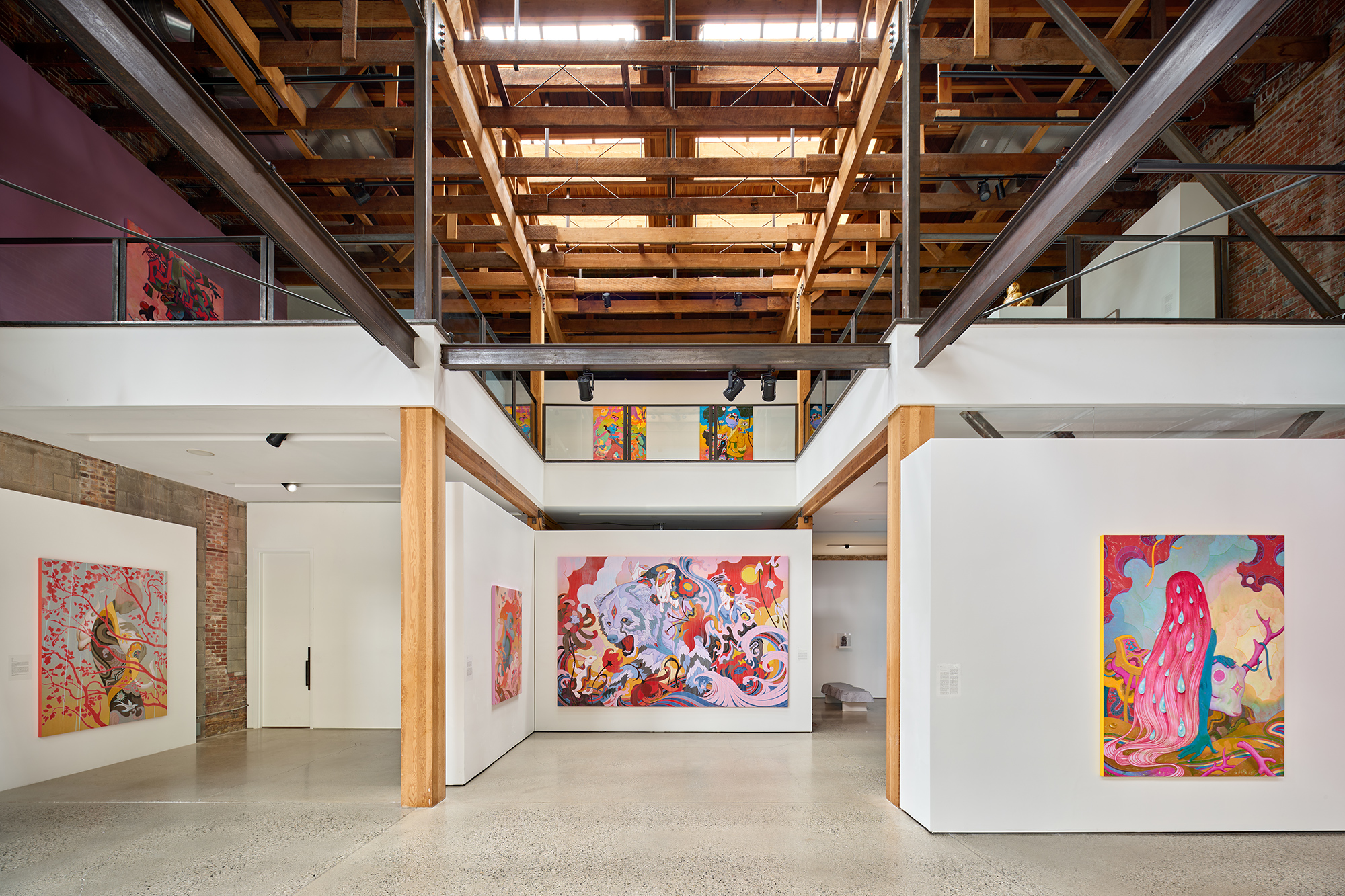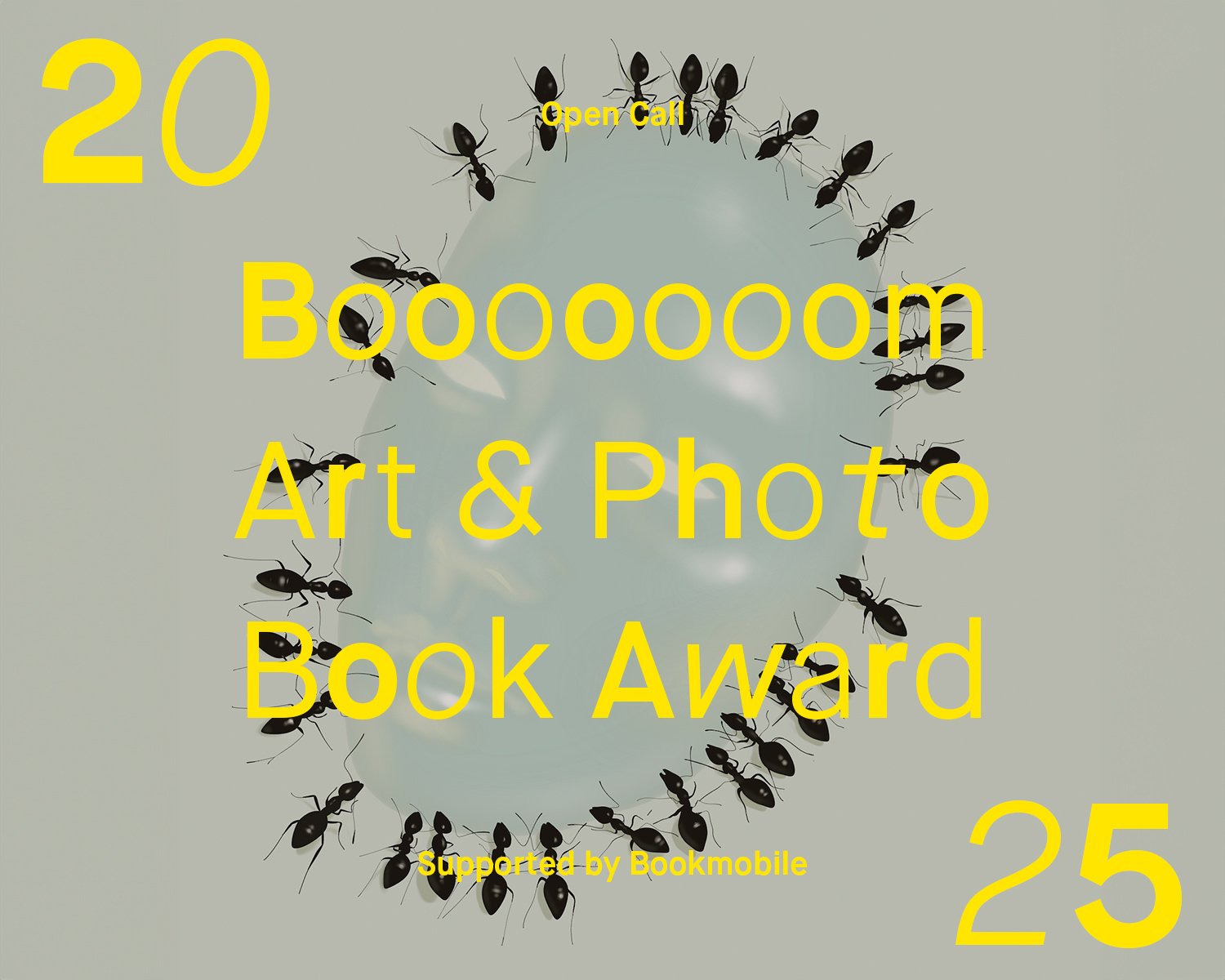James Jean’s stunning exhibition “Meadowlark” just opened this past week at CICA Vancouver. The solo show is Jean’s first in North American in a decade, and explores the intricate dynamics between heritage, cultural identity, and personal experience. I had the opportunity to ask him a few questions about the new body of work on the eve of the opening. Hope you enjoy the interview below, and if you happen to be in Vancouver this summer, make sure you check out “Meadowlark” on display at CICA Vancouver July 25 – September 15th.
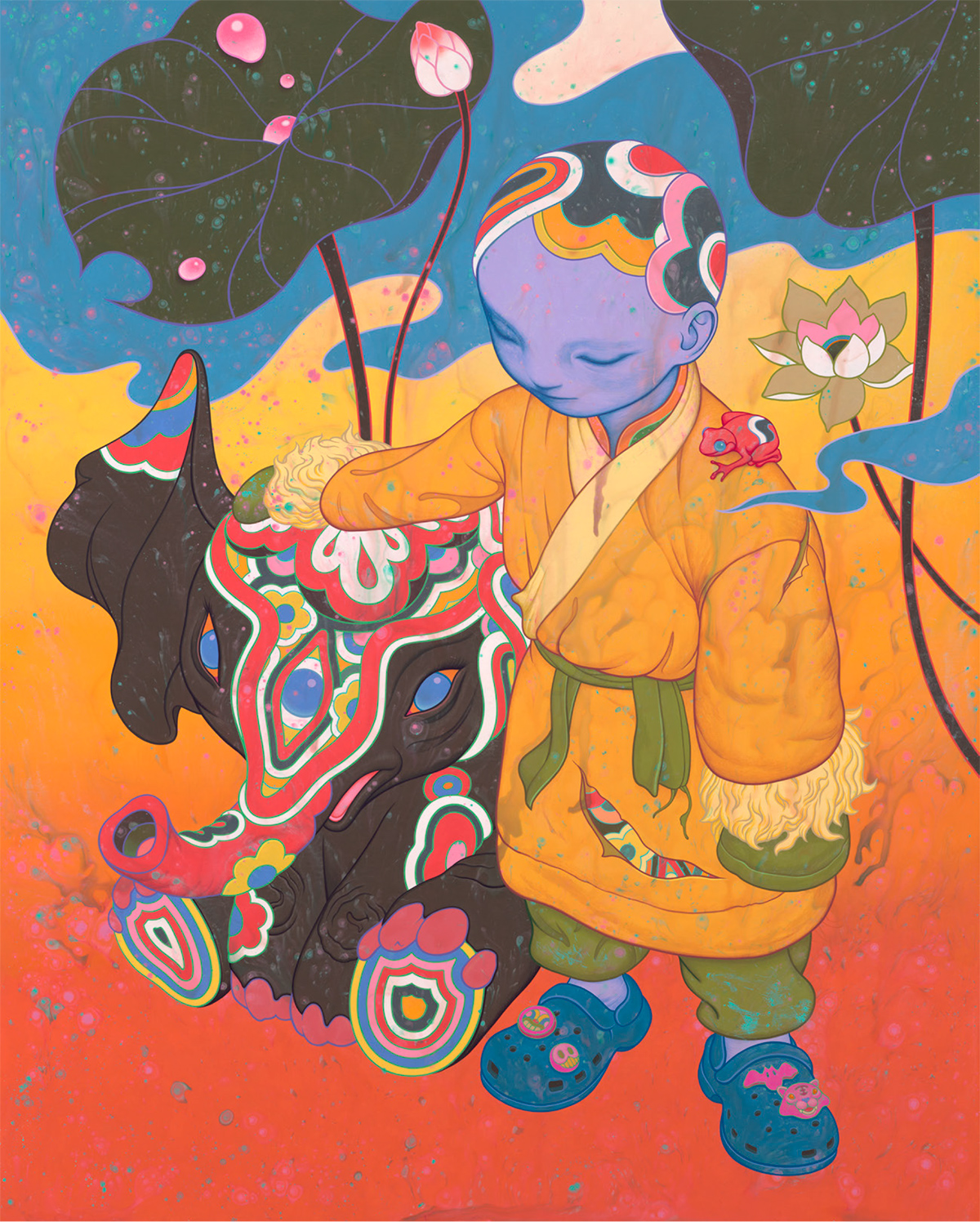
Jeff Hamada: I’m curious which piece from Meadowlark was completed first and which was completed last?
James Jean: Dragon II was completed first in the fall of 2023, and I think Nomad was completed last. Dragon II was a bellwether of how the rest of the pieces would go. Actually, the end is a blur, because I was preparing so many different projects at once before traveling to Japan in June. I’m checking through my camera roll aka memory bank, and it’s quite stunning how many things I was doing all at once in April and May.
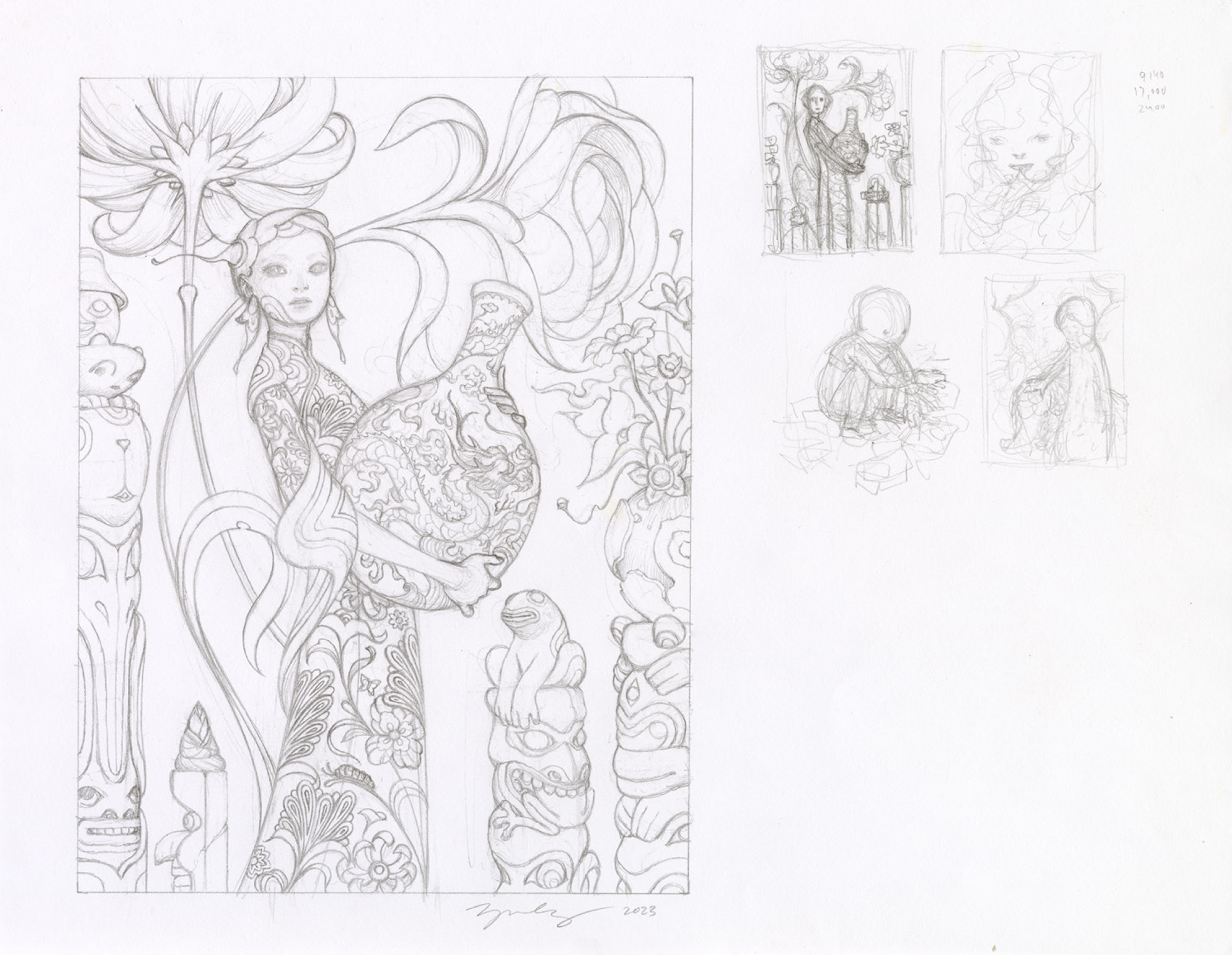
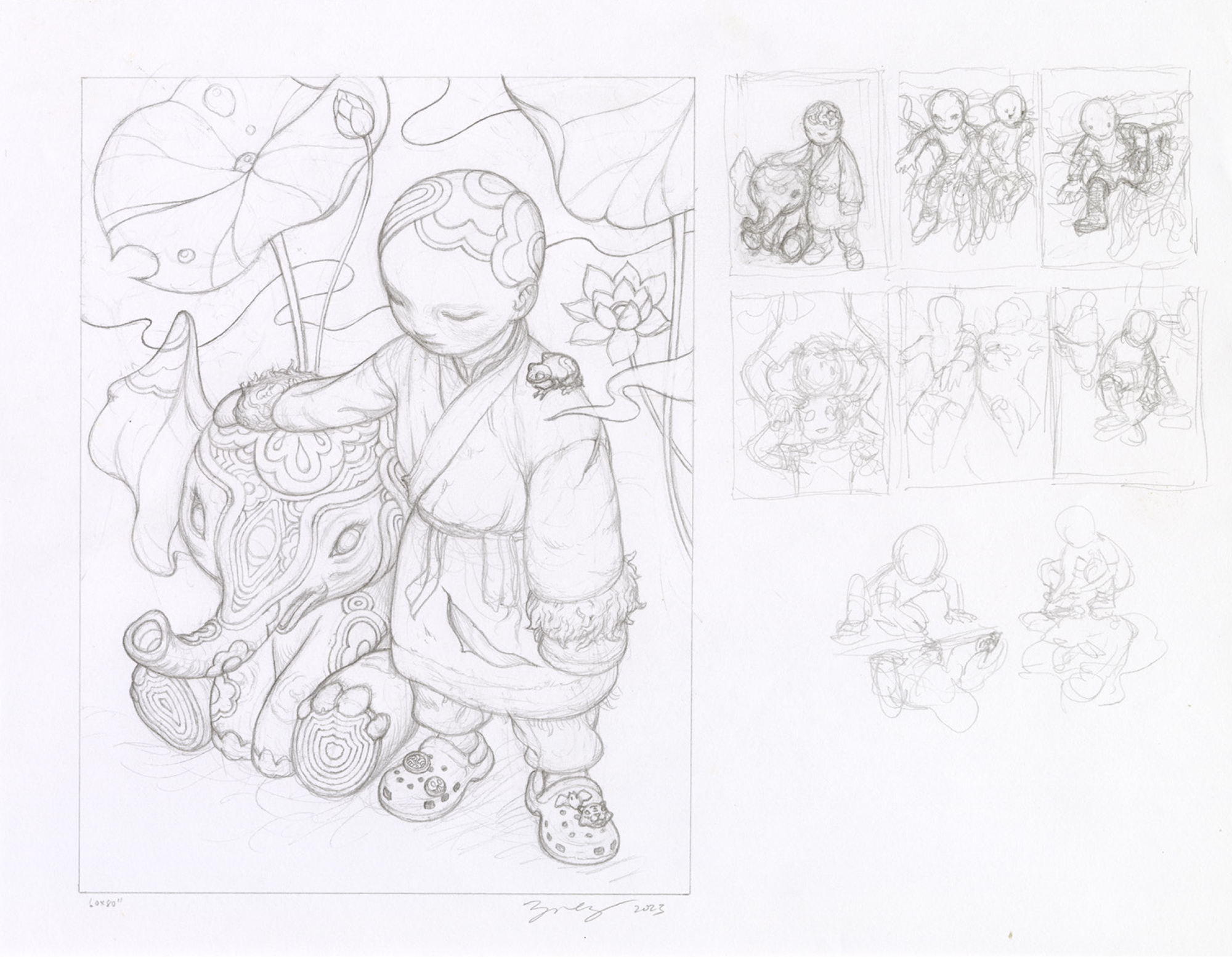
Did the show’s themes emerge organically as you created the work or were these mostly ideas you set out to explore from the very beginning?
The themes and connections emerge organically as I go along. My approach is very intuitive — I don’t like to begin working with a preconceived idea. The themes always seem to reveal themselves along the way. The sketches for this group of paintings were all done last summer in 2023, when I was traveling in Japan and China. When I returned in the fall, I started all the paintings, and it took about all year to complete them all. Ostensibly, the paintings appear to combine elements from East and West, but in reviewing the implied narratives in the paintings, I see some of the characters struggling to communicate — from the boy carrying a mountain of crumbling Chinese radicals on his back, to the crane-turned-erhu with a muffled beak, to the cat soundlessly crying behind its caretaker. In Alluvium, the figure struggles to extrude the thoughts from her head and organize the accretions below, and in Scribe, the figure draws a listless, meandering line. The broken antlers in Deer II and Fetch evoke the feeling of loss, as if losing a tooth in a dream.
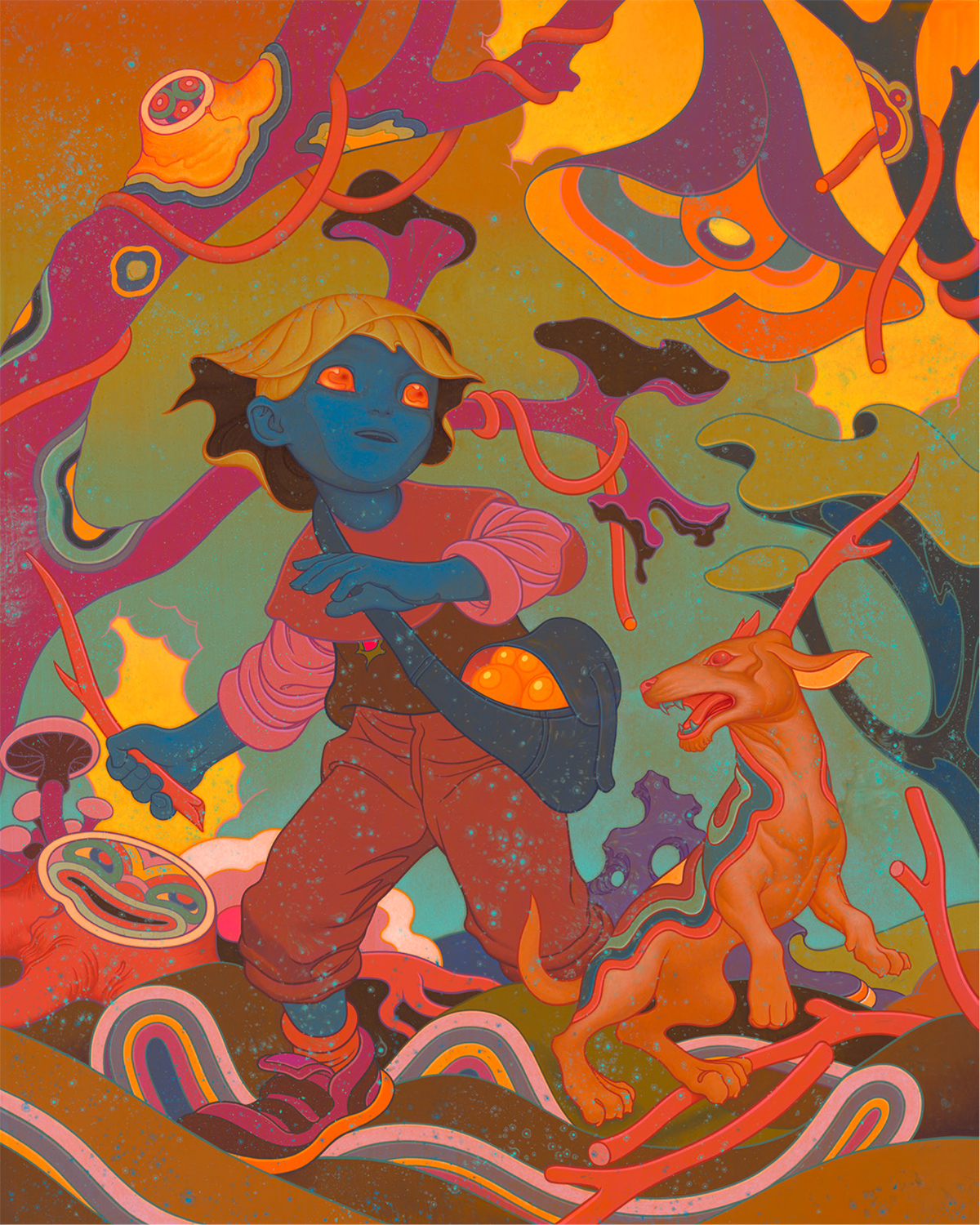
Sometimes you hide easter eggs in your work. Are there any you’d like to share or hint at here?
There’s a small spider dangling from the horn of the deer in Deer II, which might be hard to spot. This motif can also be found in Deer I, which was on view at my last museum show in Shanghai. The web is a literal connective thread that can be drawn between paintings, and therefore, between different periods of time. It’s interesting to see how the recurring motifs in the paintings, from butterflies to frogs to droplets of dew, act as trail markers for the ever-evolving paintings.
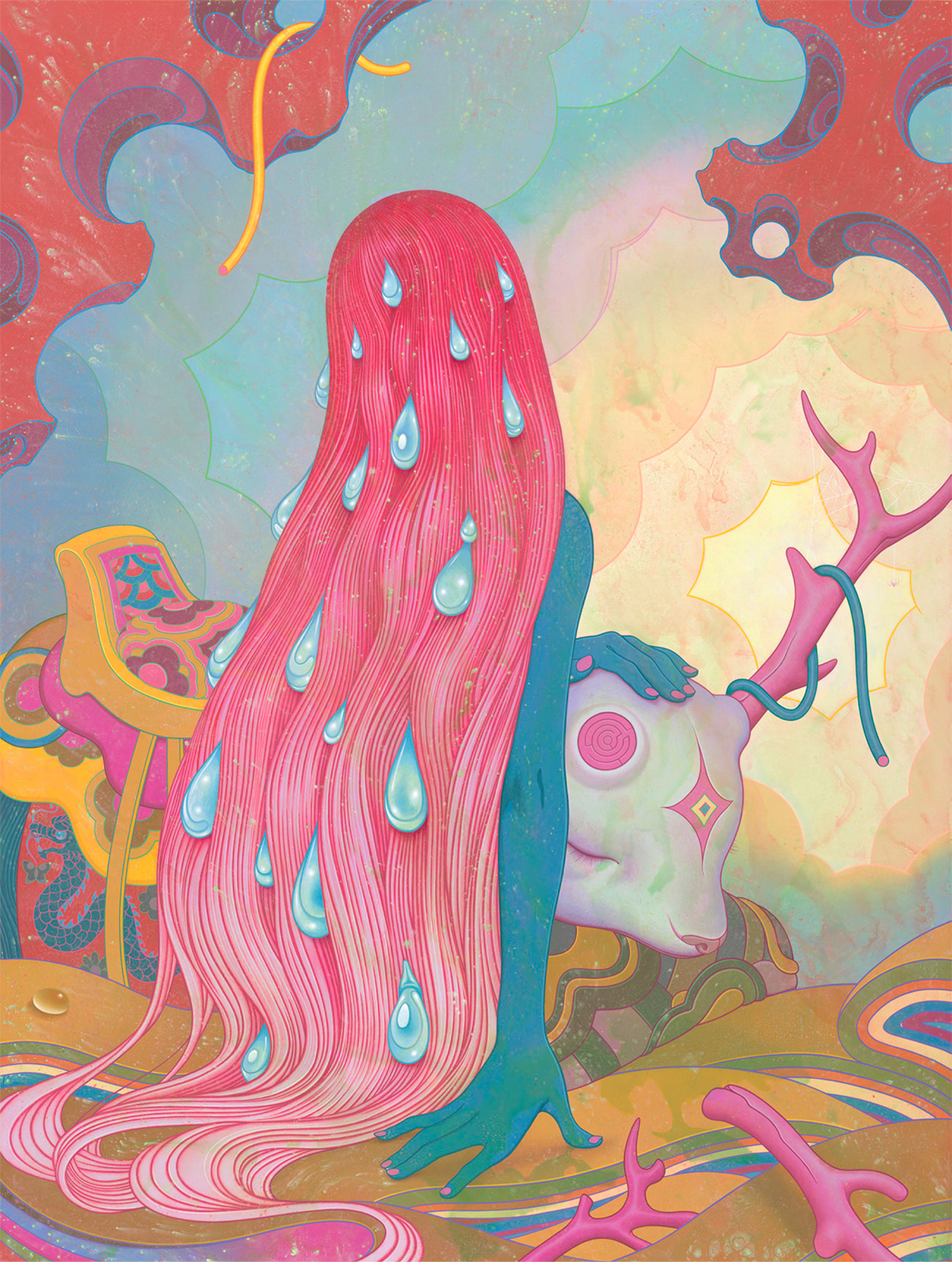
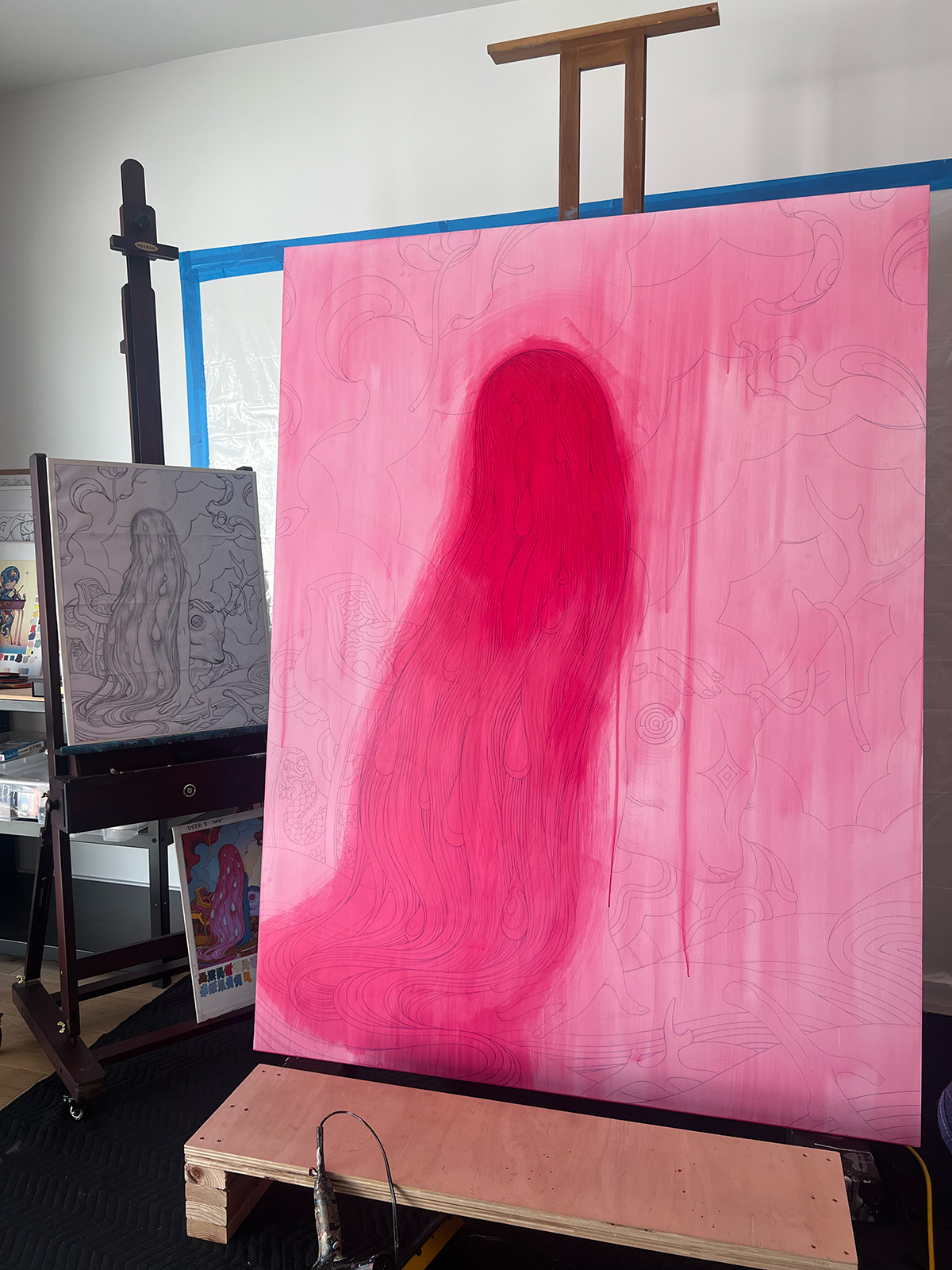
It’s easy to see your son in some of the figures in your work. Does he recognize himself? What does he think of your art?
Definitely, he sees himself, though some friends have remarked that I’ve been drawing him since before he was born. The truth is, I also drew his mother before I met her, which is evident in the figure I created for an animation called Trembled Blossoms that I made for Prada. At the moment, he doesn’t have much interest in my art. He does love reading manga, but I’m always telling him to slow down to appreciate the artwork.
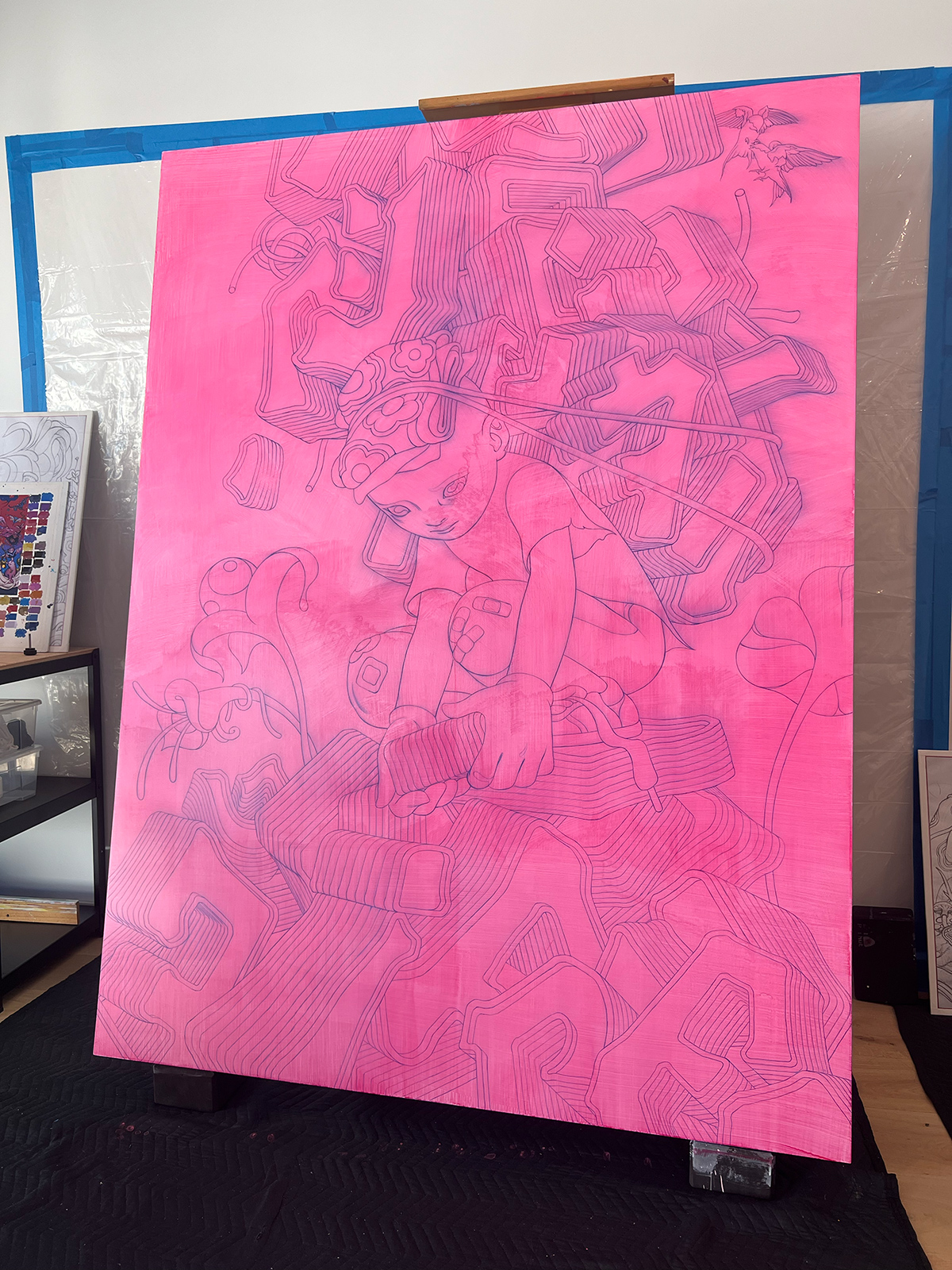
I saw an IG comment asking about the font you used for the show title. I think some people don’t realise you design the type as well. Can you talk a little bit about creating the Meadowlark letters? The thin strokes almost feel like the flight of a bird.
I wanted to create some custom typography for the show that would be barely legible, alluding to the idea of a loss of language, of the struggle to decipher symbols and to communicate. The custom letterforms I drew for Meadowlark echo the lyrical lines and arabesques that course through the paintings. The world itself is reminiscent of “cellar door”, a phrase frequently remarked upon for its beautiful sound, divorced from meaning. Meadowlark has that similar quality, of having an aesthetic phonetic quality. This is the function of paintings, to have an aesthetic presence beyond the realm of words and semantics. I suppose that’s why I’m so focused on drawing and painting, because language can be so divisive and limiting.
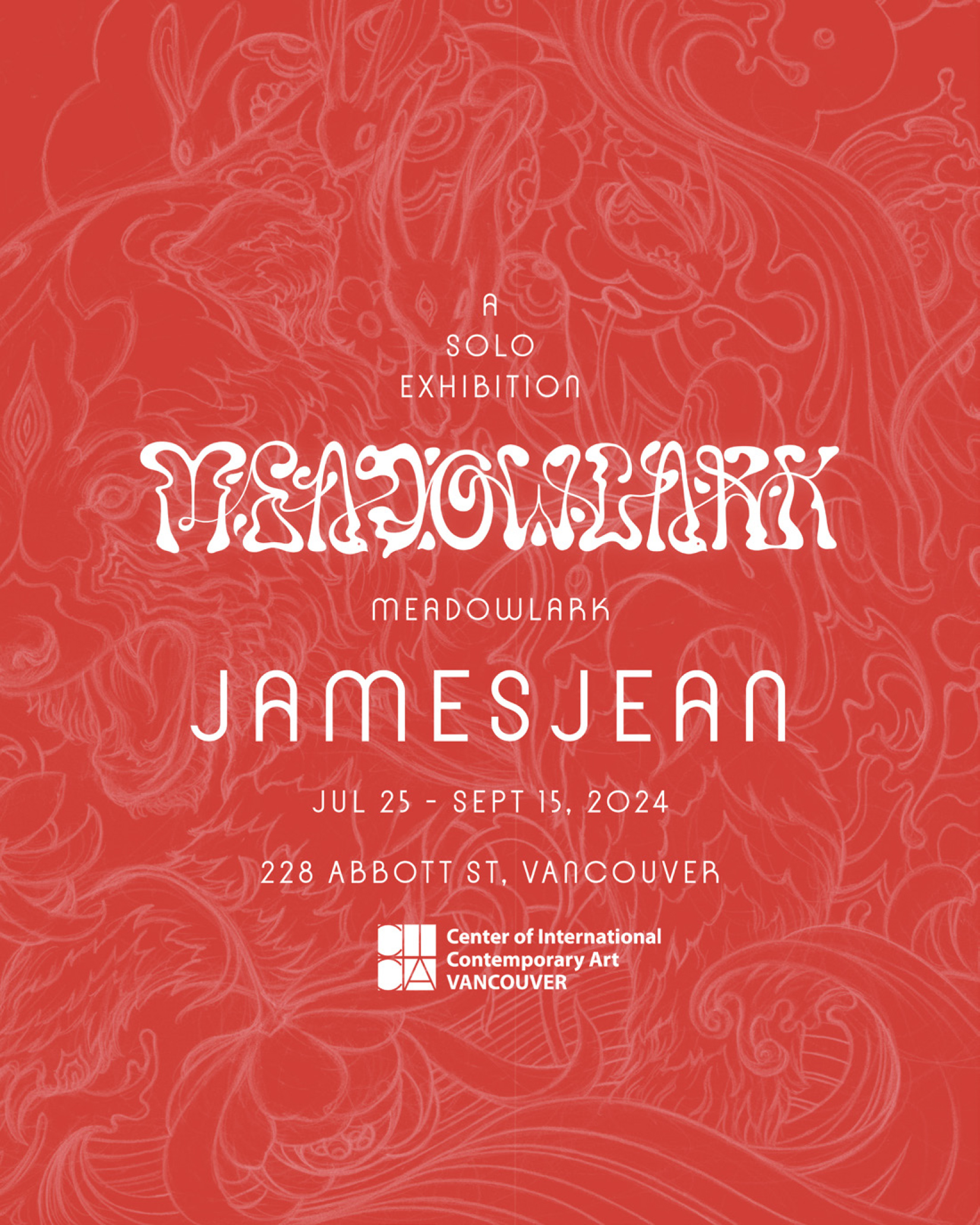
Why did you choose Vancouver for your first solo exhibition in North America in over a decade?
It’s more like Vancouver chose me. I was part of a group show at Vancouver Art Gallery in 2016 put together by Takashi Murakami and Evan Pricco, so it’s great to return to a city that welcomed me in an institutional show at an earlier point in my career. Since then, I’ve had a series of shows in Tokyo, Seoul, Shanghai, Chengdu, Shenzhen, and now in Beijing. But the West seems elusive still.
I remember asking you about some of your influences in 2011, back when your Rebus book was being released. Who or what is inspiring your work these days?
As a younger artist, I was looking at so much of the external world and absorbing influences from everywhere. Now that I’m older, I’ve become more inward facing and trying to develop and understand the recurring motifs and patterns in my own work. Actually, as I write this, I just returned from visiting Yoshitomo Nara’s home and studio in the countryside earlier today. He says he no longer worries about deadlines, and works alone in the studio without assistants. Vast green fields surround his property. It’s an idyllic existence that I long for, but life in Los Angeles is fast paced and resource hungry.
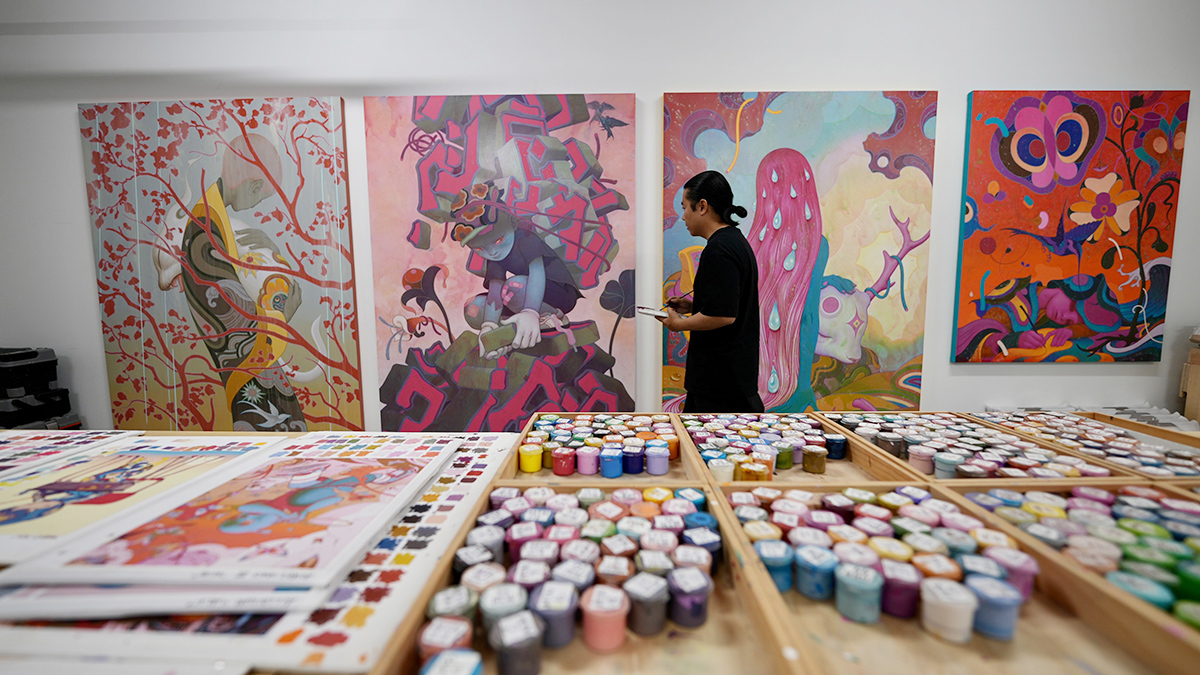
When you’re not making work, what are you spending your time doing? I know you like ping pong! Anything else?
The ping pong is relatively new – I played last summer in Tokyo at a house party with a group of other artists, including the sculptor Haroshi, and when I returned to Los Angeles, I decided to buy a ping pong table for my studio. My friends and I play consistently a few times a week. Haroshi was inspired by my purchase and has now installed a table in his Tokyo studio as well. Now that I’m back in Japan, it’s been incredibly fun playing against him in the Tokyo heat, exorcising our grievances with the art world with each chop and slice of the paddle.
I always like asking people for movie recommendations, can you recommend a film or two that I may not know about?
There’s this film called Venus Peter that I saw on TV years ago in a dreamy haze when I was traveling somewhere, I don’t remember. Maybe in Europe. It was in a hotel on a random tv channel. I was struck by the cinematography and staging, each frame a painting. My friend David O’Reilly got me a copy on DVD, but I couldn’t watch it due to region restrictions on my Playstation. In a way, I almost prefer how the film exists in my memory: an obscure, half forgotten fever dream of immaculately composed and choreographed characters enacting a nonsensical narrative.
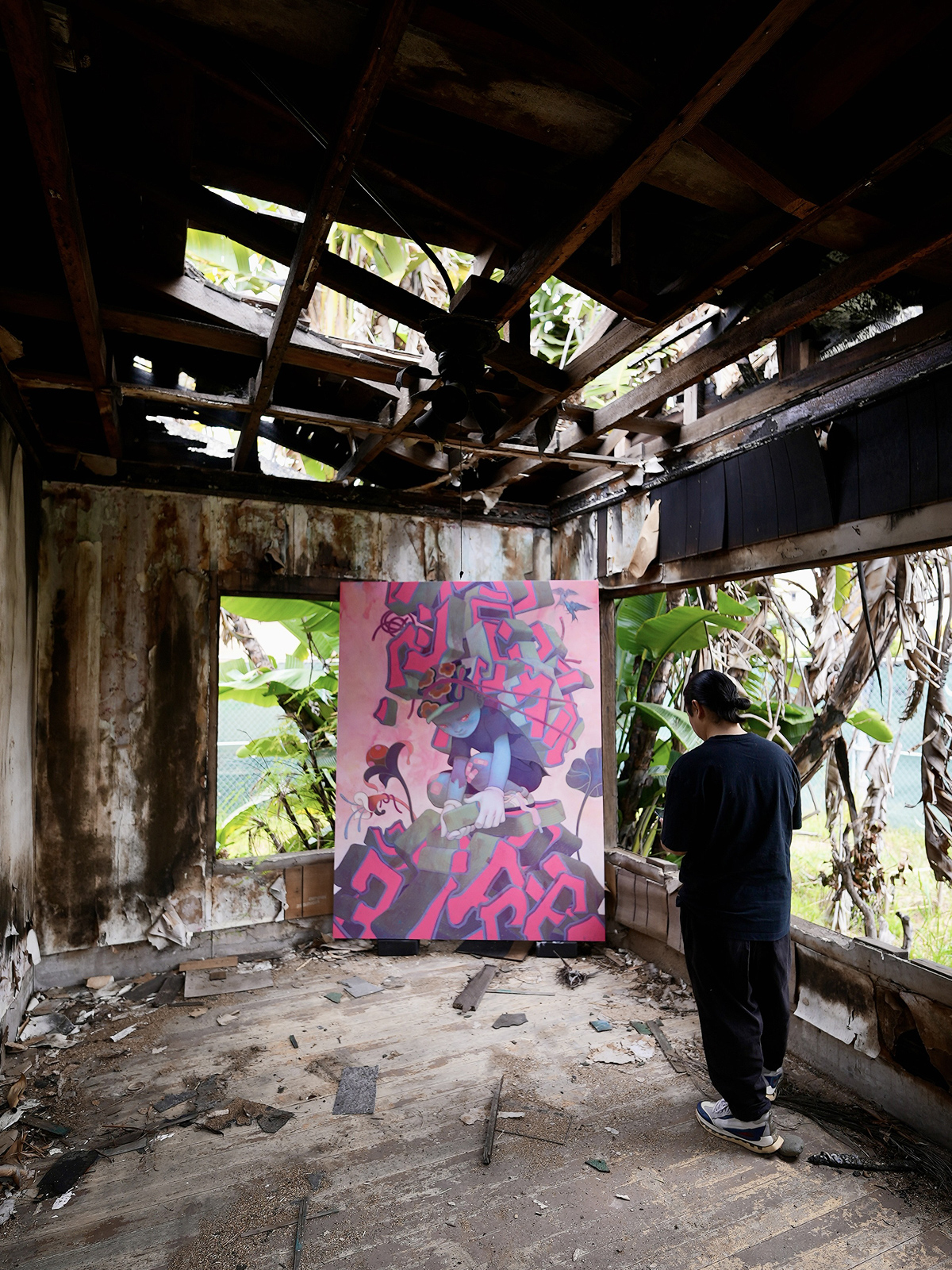
A movie like that for me was The Great Land of Small, a weird Canadian children’s fantasy film. Very trippy to watch now as an adult. You’re always working on a dozen projects at once, what’s something exciting that your fans should keep their eyes peeled for?
I’ve been building Pagoda, my fused glass dome, for the past 4 years. We’re finally nearing the end. It’s been an incredibly difficult journey figuring out how to create this unprecedented structure, and this last stage is proving to be the most difficult of all. But when it’s done, it should be incredible.
Can’t wait to see it finished. Maybe we can end this with one thing you hope to accomplish in your lifetime?
To not have to worry about deadlines
Meadowlark is on display at CICA Vancouver July 25 – September 15th.
2025 Art & Photo Book Award
Wanna turn your art or photos into a book or a zine? Here’s your chance, we’re picking 9 people!
Learn moreJoin our Secret Email Club
Our weekly newsletter filled with interesting links, open call announcements, and a whole lot of stuff that we don’t post on Booooooom! You might like it!
Sign UpRelated Articles
